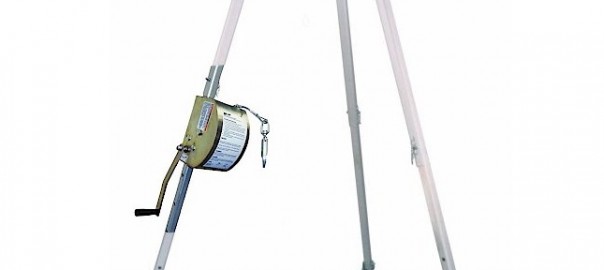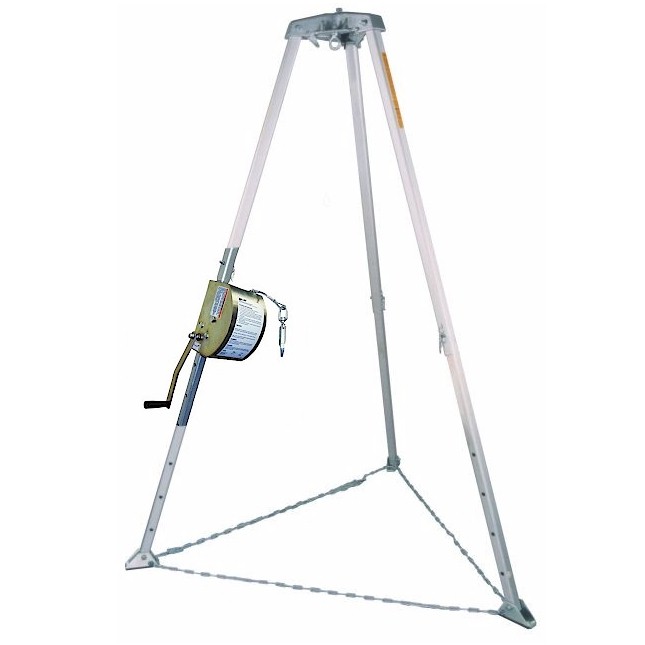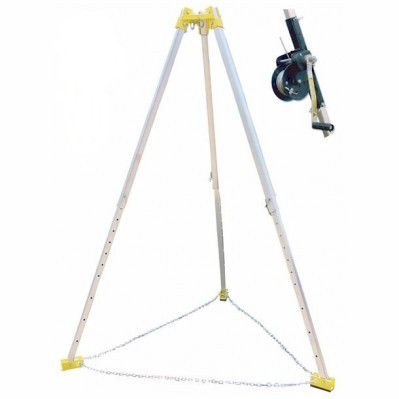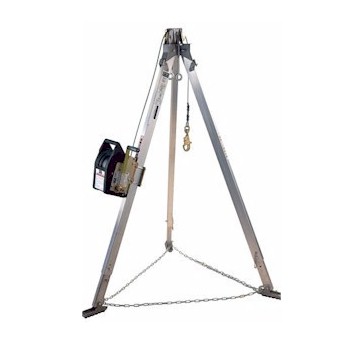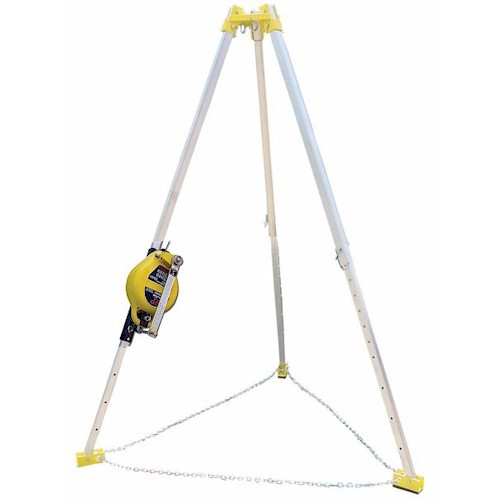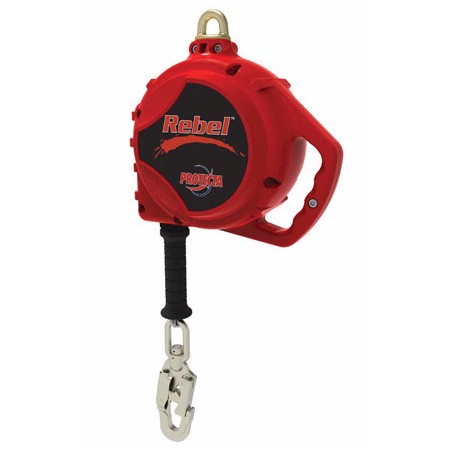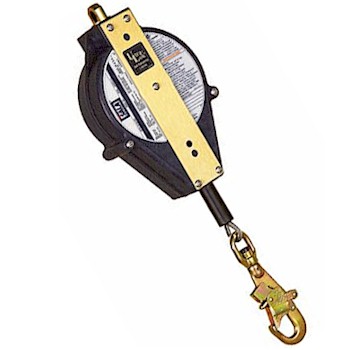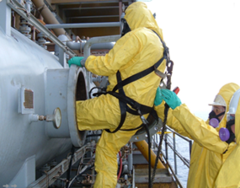 When dealing with confined space entry rescue applications, few offer as many difficulties as side-entry or horizontal entry confined spaces. The question we commonly get is, “What can we use for rescue in side-entry confined space applications?”
When dealing with confined space entry rescue applications, few offer as many difficulties as side-entry or horizontal entry confined spaces. The question we commonly get is, “What can we use for rescue in side-entry confined space applications?”
None of the traditional rescue equipment works: tripod rescue systems, quadpod systems, etc. They are made for vertical rescue applications. This means they can’t accommodate the side loads a horizontal rescue would require.
SIDE-ENTRY RESCUE OPTIONS
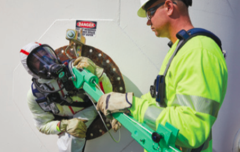 There are specialized side-entry systems. They attach to certain kinds of entry points, and use davit arm technology. These systems are very expensive and require a very specific flange configuration. The space needs to be circular; have a 22″-56″ diameter entry point; and the entry point needs a flange ranging from 1″ to 6″ in thickness. We’d be glad to help you find such a system.
There are specialized side-entry systems. They attach to certain kinds of entry points, and use davit arm technology. These systems are very expensive and require a very specific flange configuration. The space needs to be circular; have a 22″-56″ diameter entry point; and the entry point needs a flange ranging from 1″ to 6″ in thickness. We’d be glad to help you find such a system.
There are also pole hoist systems. These also require a flange at the entry point to the space. Again, these systems are fantastic, but very expensive.
AFFORDABLE OPTIONS
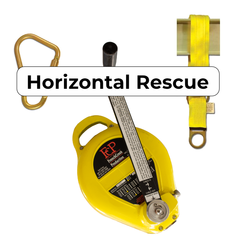 So what if you don’t have the budget or an appropriate side-entry flange configuration? This is where our HZKit-1 may help. It’s affordable, portable, and easy to use. Because it requires the presence of certain structural elements, it will not be the solution for every side-entry or horizontal confined space application.
So what if you don’t have the budget or an appropriate side-entry flange configuration? This is where our HZKit-1 may help. It’s affordable, portable, and easy to use. Because it requires the presence of certain structural elements, it will not be the solution for every side-entry or horizontal confined space application.
Here’s how the system works:
- There needs to be a suitable anchorage point nearby the entry point–a beam or other structural steel. The anchorage point needs to meet OSHA’s 5,000 pound anchorage point requirement. It needs to be at or near ground level so it is easily accessible to the confined space attendant.
- The included 3′ anchor sling is attached to this suitable beam or anchorage point.
- The R50G rescue winch is then attached to the anchor sling with the included carabiner. The handle needs to be free of obstructions so it can turn freely when engaged.
- The 50′ rescue cable is then attached to the entrant’s harness, preferably the back d-ring.
- The cable will move in and out with the entrant automatically. If rescue is needed the handle is engaged and rescue can begin.
Warning: the rescue unit must be configured in such a way that the handle has full range of turning available to it…no obstructions. The handle must be able to crank unimpeded by any obstructions. And the attendant has to have unhindered access to the rescue winch.
Warning: because the system is not used with a pulley, the attendant is pulling the full weight of the entrant.
Please check out the HZKit-1 system. Call with any questions or concerns.

